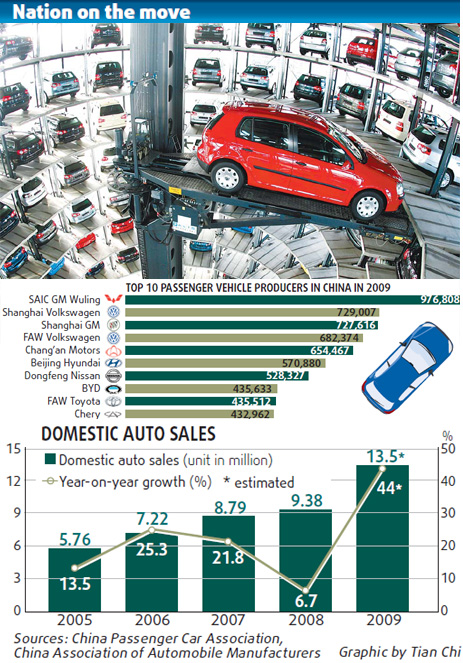The China Factor: Analyzing The Struggles Of BMW, Porsche, And Competitors In The Chinese Auto Market

Table of Contents
Intense Competition in the Chinese Luxury Car Market
The Chinese luxury car market is a battleground. Established players like BMW, Mercedes-Benz, and Audi face pressure not only from each other but also from a rapidly emerging force: local Chinese brands.
The Rise of Local Chinese Brands
Chinese automakers like BYD, NIO, and Xpeng are disrupting the market with:
- Technological advancements: These brands are integrating cutting-edge technologies, including advanced driver-assistance systems (ADAS), electric vehicle (EV) powertrains, and sophisticated connectivity features, often exceeding those offered by some established players.
- Aggressive pricing strategies: They are often able to offer competitive pricing, leveraging domestic manufacturing and supply chains.
- Government support: Government initiatives and subsidies are boosting the development and adoption of domestic brands, providing a significant competitive advantage.
- Appealing to national pride: Many Chinese consumers actively support homegrown brands, boosting their market share.
Price Wars and Premium Positioning Challenges
The intensified competition is triggering price wars, forcing premium brands to offer discounts and promotions to maintain market share. This impacts:
- Profit margins: Price reductions can significantly erode profit margins, especially considering the high manufacturing and import costs.
- Brand perception: Frequent price cuts can dilute the perceived value and exclusivity of luxury brands, potentially harming their long-term image.
- Strategic adjustments: Luxury brands are forced to re-evaluate their pricing and promotional strategies to balance market competitiveness with brand positioning.
The Importance of Localized Strategies
Success in China demands deep localization. Brands that fail to adapt to unique preferences risk being left behind. Examples include:
- Successful localization: Brands that have invested in understanding Chinese consumer tastes, offering tailored features and marketing campaigns, have experienced greater success. This includes adapting vehicle designs, incorporating preferred features, and utilizing local celebrity endorsements.
- Failures of brands that haven't adapted: Conversely, those clinging to a globalized approach often struggle to compete effectively. A lack of cultural understanding and inadequate market research can lead to poorly received products and ineffective marketing.
Navigating the Complex Regulatory Landscape in China
The Chinese automotive market is governed by a complex web of regulations that significantly impact foreign automakers.
Emission Standards and Environmental Regulations
China's increasingly stringent emission standards and environmental regulations necessitate significant investments in cleaner vehicle technologies. This includes:
- Meeting stringent emission limits: Manufacturers need to adapt their powertrains and production processes to meet the demanding environmental standards set by the Chinese government.
- Investment in R&D: This leads to significant investments in research and development to develop compliant vehicles.
- Impact on vehicle development: The regulations can affect vehicle design, production costs, and ultimately, market competitiveness.
Import Tariffs and Trade Policies
Import tariffs and fluctuating trade policies directly influence the profitability of foreign automakers.
- Tariff increases: Changes in import tariffs can increase the cost of imported vehicles, impacting price competitiveness.
- Trade disputes: Geopolitical factors and trade disputes can also create uncertainties and challenges for foreign brands operating in China.
- Strategic sourcing: Automakers may consider strategies to mitigate tariff impacts, such as shifting production or sourcing components locally.
Government Subsidies and Incentives
Government subsidies and incentives often favor local brands, creating an uneven playing field.
- Electric vehicle subsidies: Substantial subsidies for electric vehicles often benefit Chinese EV makers disproportionately.
- Investment incentives: Local brands also receive incentives for establishing manufacturing facilities and research centers in China.
- Impact on market share: These policy differences influence the competitive dynamics, giving local brands a significant advantage.
Understanding Chinese Consumer Preferences and Trends
Understanding Chinese consumer preferences is paramount for success in this dynamic market.
The Importance of Technology and Innovation
Chinese consumers, particularly younger buyers, strongly favor technologically advanced features. This includes:
- ADAS features: Advanced driver-assistance systems like lane keeping assist and adaptive cruise control are highly desirable.
- Connectivity features: Seamless integration with smartphones and other smart devices is crucial.
- Electric powertrains: Demand for electric vehicles is growing rapidly, particularly in major cities with stricter emission regulations.
Shifting Consumer Demographics and Buying Habits
The Chinese consumer base is evolving, with a rising affluent middle class and a significant shift toward online purchasing.
- Younger generation influence: Younger consumers are tech-savvy, brand conscious, and heavily influence purchasing decisions.
- Online sales and digital marketing: E-commerce plays a crucial role, requiring a robust online presence and digital marketing strategies.
- Changing preferences: Consumer preferences are shifting rapidly, demanding constant adaptation from automotive brands.
Brand Image and Reputation Management
Brand reputation is critical in China, heavily influenced by social media and online reviews.
- Social media impact: Negative online reviews can quickly damage a brand's image and sales.
- Public relations and brand building: Positive public relations and strong brand-building activities are essential for maintaining a positive image.
- Influencer marketing: Collaborating with key opinion leaders (KOLs) in social media can significantly impact brand perception.
Conclusion: Overcoming the Challenges of the China Factor
The Chinese auto market presents significant challenges for premium brands like BMW and Porsche. Intense competition from domestic brands, complex regulatory hurdles, and rapidly evolving consumer preferences require sophisticated strategies. Success hinges on localization, embracing technological innovation, and building a strong brand image. To navigate this complex landscape successfully, foreign automakers must invest in thorough market research, develop localized products and marketing campaigns, and stay agile in response to evolving regulations and consumer trends. Further research into the China factor is crucial. Explore case studies focusing on "China auto market analysis," "China luxury car market trends," and strategies for "navigating the Chinese automotive landscape" to gain deeper insights into this critical market.

Featured Posts
-
 Exploring Rotorua New Zealands Geothermal And Cultural Hub
May 12, 2025
Exploring Rotorua New Zealands Geothermal And Cultural Hub
May 12, 2025 -
 Manon Fiorot Skills Strengths And The Path To Ufc Gold
May 12, 2025
Manon Fiorot Skills Strengths And The Path To Ufc Gold
May 12, 2025 -
 Limited Edition Doom Dark Ages Xbox Controllers And Wraps Where To Buy
May 12, 2025
Limited Edition Doom Dark Ages Xbox Controllers And Wraps Where To Buy
May 12, 2025 -
 Skandalen Rundt Prins Andrew Og Virginia Giuffre Fakta Og Analyser
May 12, 2025
Skandalen Rundt Prins Andrew Og Virginia Giuffre Fakta Og Analyser
May 12, 2025 -
 Intriguing Matchup Cissokho Takes On Kavaliauskas For Wbc Title Shot
May 12, 2025
Intriguing Matchup Cissokho Takes On Kavaliauskas For Wbc Title Shot
May 12, 2025
